06/08/2017
Jean-Marc Fantasies about France of the future from the distant past.
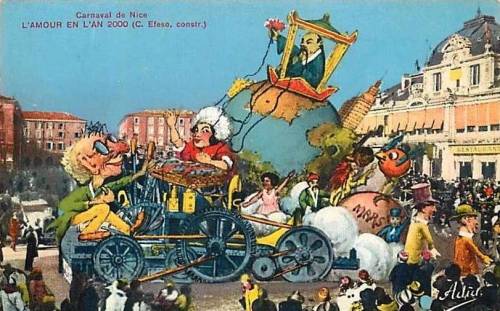
The project "France in 2000 (XXI century)" is a series of futuristic paintings, coined by the French artist Jean-Marc C?t¨¦ and associates, which was released in France in 1899, 1900 and 1901-1910 - Ies.
Postcards show us that with the imagination of our ancestors was all right! ))
Colorful fantasies from the past are what life seemed like to people living in 1900, in the future, namely, in 2000.
These funny pictures have a long and long-suffering story. Furthermore! We could never see them if it were not for ... Isaac Asimov. He's still fantastic! ))
So in order.
Jean-Marcus Cote illustrations were ordered by the toy company Armand Gervais.
There are at least 87 cards in total.
The first series of images called "EN L'AN 2000" was produced in the form of paper labels for packs of cigarettes for distribution at the World Exhibition in Paris in 1900.
Unfortunately, Armand Gervais (1912 - 1990) unexpectedly died and his company ceased operations.
So these cards never spread. The plant was closed and it was abandoned for almost a quarter of a century.
Until Monsieur Reno appeared! He visited the room with the idea of ??using it to make toys. Instead, he discovered Gervais' untouched products, including maps.
Monsieur Renault decided not to release toys, but to buy the entire stock of the company for his store on the left bank.
History develops further!
In 1978, science fiction writer Isaac Asimov and his wife lived in Paris. They visited the store Reno and Isaac Azimov bought a set of cards. According to Azimov, there was only one set, fifty postcards in which were not damaged by water in an abandoned factory. Intrigued by this collection, he wrote the book "Futuredays: A Nineteenth Century Vision of the Year 2000", which was published in 1986.
In this book, Azimov analyzes each drawing and discusses why some subjects could come to mind from a different era.
When a talented futurist conducts his own investigation of the artifacts of the past, it's damn interesting! I think that the most curious of you have already fled to find a book. )))
Well, I propose to look at at least a portion of the illustrations.
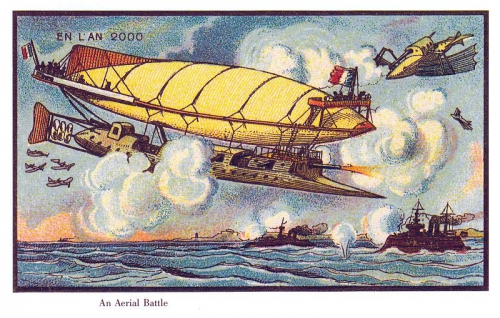
Man has always dreamed of conquering the air. This was almost his first desire, when he realized that he could make progress with his own hands.
He constantly tried, experimented, failed - and yet did not lose optimism.
Man believed that conquest of the air element is a matter of time.
This belief is very well traced in the works of French cartoonists of the late nineteenth and early twentieth centuries.
A little more than a century ago, people dreamed that in a hundred years everyone will be free to fly on business or for pleasure. These were supposed to be aero-taxi station.
Alas, they were embodied only in the "Fifth Element":
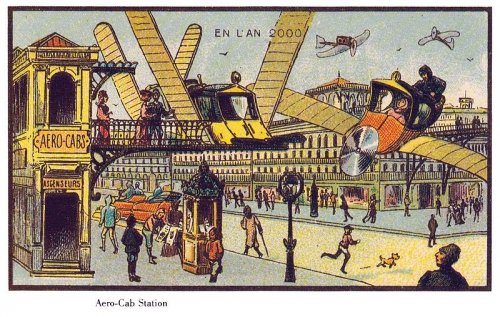
All fly. Firemen in a Batman costume extinguish a fire.
And you have no fire stairs!)
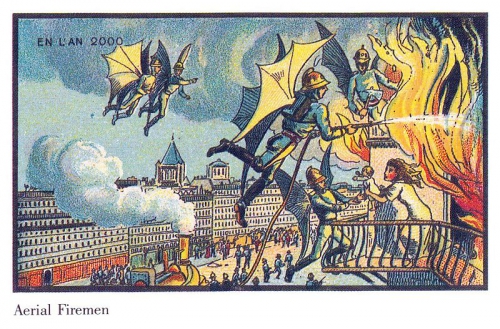
And the postmen arrive like Karlsons straight to you on the balcony.
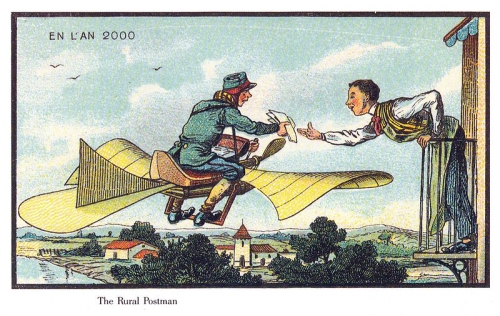
And the aerial police catches flying criminals.
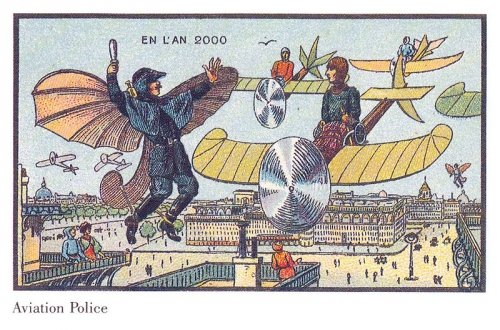
Even hunters and those, according to our ancestors, should be volatile!
And what? Maybe some people are dreaming about this now. ))
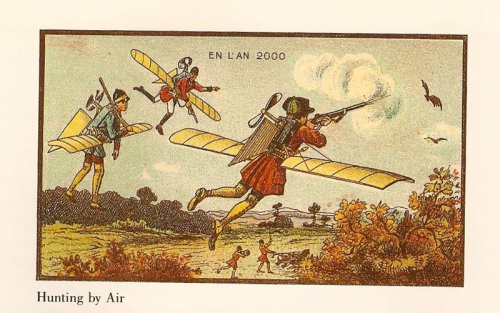
And tennis is also in flight!
It turns out that our ancestors believed that people will become birds. Does not it remind you of anything?
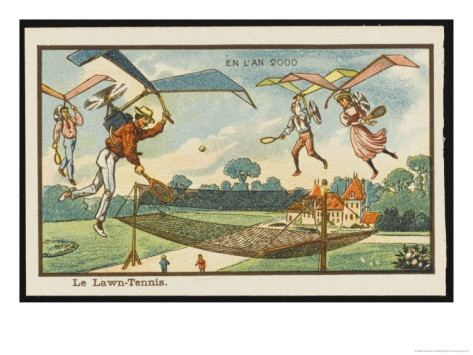
People always and at all times like to fantasize and predict the future.
1900 year.
Civil Engineer John Elfret Watkins, Jr. in the well-known article "What can happen in the next hundred years," published in the Ladies Home Journal, quite rightly predicted that cars would be cheaper horses, the houses would be hot and cold air if necessary, the chambers would allow To see what is happening on the other side of the globe.
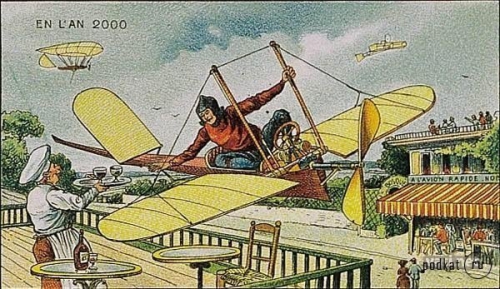
At the same time, he missed out on free state sports halls, medical drugs for point application and complete elimination of flies and mosquitoes.

In some ways, Watkins was only partially right: for example, he believed that a worldwide air service would be carried out using airships.
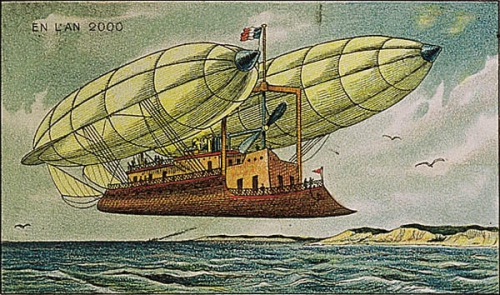
The 1910s.
Forecasts become a little more accurate: electric trains, motorcycles, helicopters, film screenings.
At the same time - automatic tailors and hairdressers, as well as heating of homes using radium.
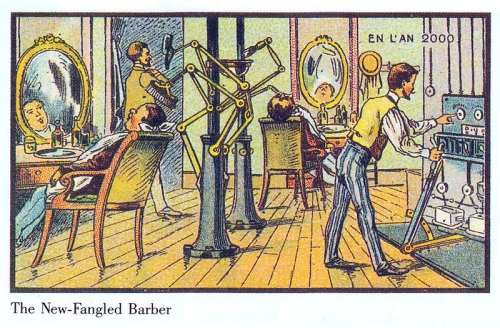
Footwear on rollers.
The 1930s.
This prediction about the fashion of the future (see the video) is made as a joke. The authors believed that the emphasis would shift from aesthetics to technological innovation. For example, the style of dresses can be changed on the move, aluminum fabric can control the temperature. One of the predictors believed that skirts and dresses would completely disappear, giving way to trousers. Ironically, it was almost possible to guess that men would carry telephones and radios attached to their clothes.
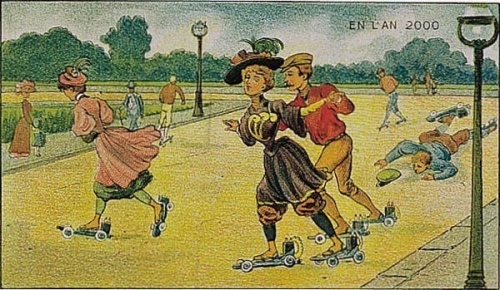
05:07 | Lien permanent | Commentaires (0)
Les commentaires sont fermés.